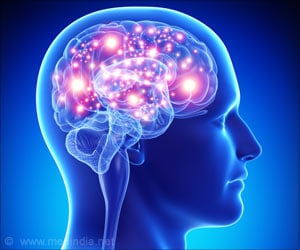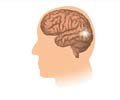- Absence seizure - symptoms and causes - (https://www.mayoclinic.org/diseases-conditions/petit-mal-seizure/symptoms-causes/syc-20359683)
- Absence seizure - diagnosis and treatment - (https://www.mayoclinic.org/diseases-conditions/petit-mal-seizure/diagnosis-treatment/drc-20359734)
- What are absence seizures? - (https://www.hopkinsmedicine.org/health/conditions-and-diseases/epilepsy/absence-seizures)
Why does a Seizure occur?
A seizure refers to abnormal electrical activity in the brain. Normally, nerve cells in the brain communicate with each other by firing tiny electrical impulses. When these impulses become abnormal, it causes a seizure.
The abnormal electrical activity may be restricted to one part of the brain; this results in a partial or focal seizure. When the abnormal electrical activity is generalized, a generalized seizure results.
What is an Absence Seizure?
An absence seizure, earlier referred to as petit mal epilepsy involves a sudden brief lapse in consciousness and staring blankly into space. Typically, these spells last less than 15 seconds at a time and often go unnoticed.
Absence seizures are a form of generalized seizure and most often affect children aged between 5 to 15 years.
During an attack, the person suddenly goes blank, stopping what he or she is doing and just staring into space. The attacks may be infrequent or can reach up to 50-100 episodes per day. Physical injury, as might occur due to falling in other types of generalized seizures, is rarely seen in the absence seizure. After the attack passes, the person recovers completely without any residual effects. The seizures are often mistaken for daydreaming or inattention at school.
Since these attacks affect concentration and might interfere with learning, it is necessary to seek prompt medical attention. Most children outgrow these attacks during their teens, though a few may develop true full-blown convulsions or grand mal epilepsy, which is far more serious(1✔ ✔Trusted Source
Absence seizure - symptoms and causes
Go to source).
Causes of Absence Seizure
The cause of absence seizures is not known, though it is thought that genetics might play a role.
Increased rate of breathing (hyperventilation) has been shown to trigger attacks of absence seizures.
Persons suffering from absence seizures have altered levels of chemicals (neurotransmitters), which are necessary for normal impulse propagation between nerves.
Risk Factors for Absence Seizures
Absence seizures are associated with the following risk factors.
- Age – Most common between the ages of 5-15 years.
- Gender– Affects girls more commonly than boys
- Family history – History of a family member or a close relative with a seizure is present in nearly half the cases
- Febrile seizures – Infants or children with a history of seizures brought on by fever are more likely to develop absence seizures.

Symptoms of Absence Seizures
Typically absence seizures involve sudden brief spells of staring blankly into space, the attack not lasting more than 15 seconds. There are no post-seizure symptoms such as headache, confusion, or drowsiness.
Other associated symptoms that may be present include
- Lip smacking or chewing movements of the mouth
- Involuntary movement of hands
- Finger rubbing
- Fluttering of eyelids
- Stopping suddenly while moving without falling
Sometimes a family member might notice these attacks and seek medical attention. Very often, a decline in learning ability is noticed and teachers may also inform parents about the child’s frequent lapses of attention or daydreaming during class(1✔ ✔Trusted Source
Absence seizure - symptoms and causes
Go to source).

Complications of Absence Seizures
Most children outgrow this condition by their teens. However, a few children might go on to suffer seizures throughout their lives or progress to grand mal epilepsy.
Other possible complications include
- Behavioral problems
- Difficulties with learning
- Social stigmatization
Diagnosis of Absence Seizures
Following a complete history and thorough physical examination, the doctor might conduct the following investigations.
Electroencephalogram (EEG) – This is a test done to assess the electrical activity of the brain. It is a simple non-invasive procedure. It is performed by a trained specialist called a Clinical Neurophysiologist.

Electrodes that are sensors are attached to the head and connected to a computer. The tracing of the electrical activity will appear on the screen. Alternately, the tracing may also be recorded on a strip of paper. Changes in the normal electrical activity pattern are seen in epilepsy or seizures.
The patient is asked to lie down with his eyes closed and asked to breathe rapidly and see a bright flashing light. Sometimes the patient is sedated and allowed to go to sleep. The activity of the brain under these various stimuli is measured.
The recording is called an electroencephalograph. The typical pattern of EEG in the absence seizure is described as '3 Hz spike and wave' discharges.
The test might take approximately an hour or so after which the person can resume normal activities.
Radiological Imaging – Brain computerized tomography (CT) scan or magnetic resonance imaging (MRI) may be necessary to rule out other diseases affecting the brain or brain tumors.
Blood Tests – Blood tests such as complete blood count (CBC) may be done. Biochemical tests are done to rule out electrolyte disturbances such as low blood sodium levels which may cause seizures. Blood sugar levels are estimated as alterations in blood sugar levels can cause seizures. Kidney and liver function tests are done to check their functional status and to select the appropriate medication.
Cerebrospinal Fluid (CSF) Analysis – In some cases, CSF analysis may be needed to look for the presence of abnormal cells, bacteria or fungi and to rule out meningitis, an inflammation of the membranes surrounding the brain.
Treatment of Absence Seizures
Drugs commonly prescribed for the absence seizures include one of the following
Ethosuximide – This is the drug most often prescribed initially for the absence seizures, and most cases respond well.

Valproic acid – This is an alternate drug for the absence seizures. However, as this drug is associated with birth defects, it should not be used in women who are pregnant or planning a pregnancy. It is also associated with liver damage.
Lamotrigine – This is less effective than ethosuximide or valproic acid, but is associated with fewer side effects.
Most persons can gradually reduce the dose of anti-seizure medications under specialist supervision once they remain seizure free for at least 2 years(2✔ ✔Trusted Source
Absence seizure - diagnosis and treatment
Go to source).
How can you Prevent Absence Seizures?
Once absence seizures have been diagnosed, following these measures could help reduce further attacks.
- Taking the prescribed medications regularly
- Getting good sleep at night
- Eating a healthy well-balanced diet
- Exercising regularly
- Stress management
- Avoiding exposure to common triggers like flickering lights (e.g., using cell phones or TV)
- It may be important to seek help from a clinical psychologist to manage anxiety and stress. Such a consultation could also help deal with social isolation to some extent.
- Educating friends, relatives, co-workers, and classmates about one’s condition will also help so that they are aware of the condition and know what needs to be done.
- Teachers should be informed so that special attention may be provided wherever necessary.
- The child should be encouraged to lead as normal a life as possible.
- Local support groups and online social media support forums can offer support and encouragement(3✔ ✔Trusted Source
What are absence seizures?
Go to source).











